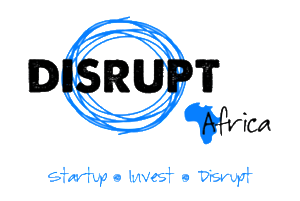MicroStrategy’s co-founder Michael Saylor recently captured the attention of the crypto community with a new Bitcoin-related prediction. According to Saylor, 99% of Bitcoin might end up being mined in the next 10 years.
Bitcoin Mining Might Be Speeding Up
Saylor posted a tweet recently predicting that 99% of Bitcoin will be mined by January 2, 2035. As most crypto industry participants are likely aware, Bitcoin has a finite supply of 21 million BTC. All of these coins were locked up when BTC was created, and can only be released into circulation through mining.
https://x.com/saylor/status/1840024420447895619
Processing transactions and storing them into blocks that make up the blockchains releases new BTC in the form of mining rewards for those who provide processing power that runs the whole system. On average, it takes about 10 minutes to create one block, and when it first started operating, the Bitcoin blockchain was offering 50 BTC as reward.
However, it also has a mechanism that cuts the rewards in half each time when BTC hits 210,000 solved blocks. This is known as the halving, and it happened four times so far, with the latest one being earlier this year.
So far, the number of BTC in circulation has reached 19,761,393, meaning that 94.10% of the coin’s total supply has been mined. This implies that only 1,238,607 remains to be mined in the future, and Saylor predicts that 99% will be out by January 2035.
His prediction is based on the assumption that Bitcoin mining activity will accelerate in the next decade, resulting in 5% more BTC mined than the amount that was supposed to be released. This is possible because Bitcoin has a mining difficulty mechanism that increases or decreases the difficulty based on the amount of computational power that the chain has at its disposal.
More miners means more power, which leads to faster mining. To counter that, the chain increases the difficulty of balancing the scales. However, this process is not instant, and the mechanism only checks whether the power and the difficulty are in balance after a certain period of time. In other words, a sudden shift in the amount of power would cause faster mining until the mining difficulty gets corrected. If this happens too often because of greater interest in mining BTC, it could lead to more coins being mined faster.
While this might be an issue worth addressing, it is not an urgent matter just yet. What is time-sensitive is finding the right cryptocurrency to buy ahead of the upcoming crypto rally, which is expected to start in the next few weeks, or possibly months. What makes matters more urgent is buying cryptos that are still in presale, such as Pepe Unchained (PEPU), as this is the best time to buy coins and tokens at low prices.
JOIN THE PEPE UNCHAINED PRESALE AND BUY AT LOW PRICE
Why Should You Buy Pepe Unchained?
Pepe Unchained is one of the most successful meme coin presales in 2024, and potentially one of the highest-ranking cryptos in the making. The project considers itself an improved version of the original Pepe, which currently sits as the third-largest meme coin by market cap.
Despite its success, the original Pepe (PEPE) has been limited by Ethereum’s technical capabilities, since it is an ERC-20 token that runs on Ethereum’s network. In short, it suffers from the same issues as ETH, including slow transactions, high fees, and a lack of scalability.
Pepe Unchained addressed these issues by launching its own Layer-2 blockchain which allows it to be faster, cheaper, and more scalable than the original. This is something that might give it a massive competitive edge against PEPE once it goes live.
BUY PEPU BEFORE ITS PRICE GOES UP
For the time being, however, it is still in the ICO stage, and its presale raised over $16.7 million, rapidly closing in on the $17 million mark. Not only that, but the token still sells for only $0.0099, but this will change in less than two days, when it will finally reach the price of 1 cent per token. If you move quickly, you can still buy it before that, using ETH, USDT, BNB, or credit/debit cards.

